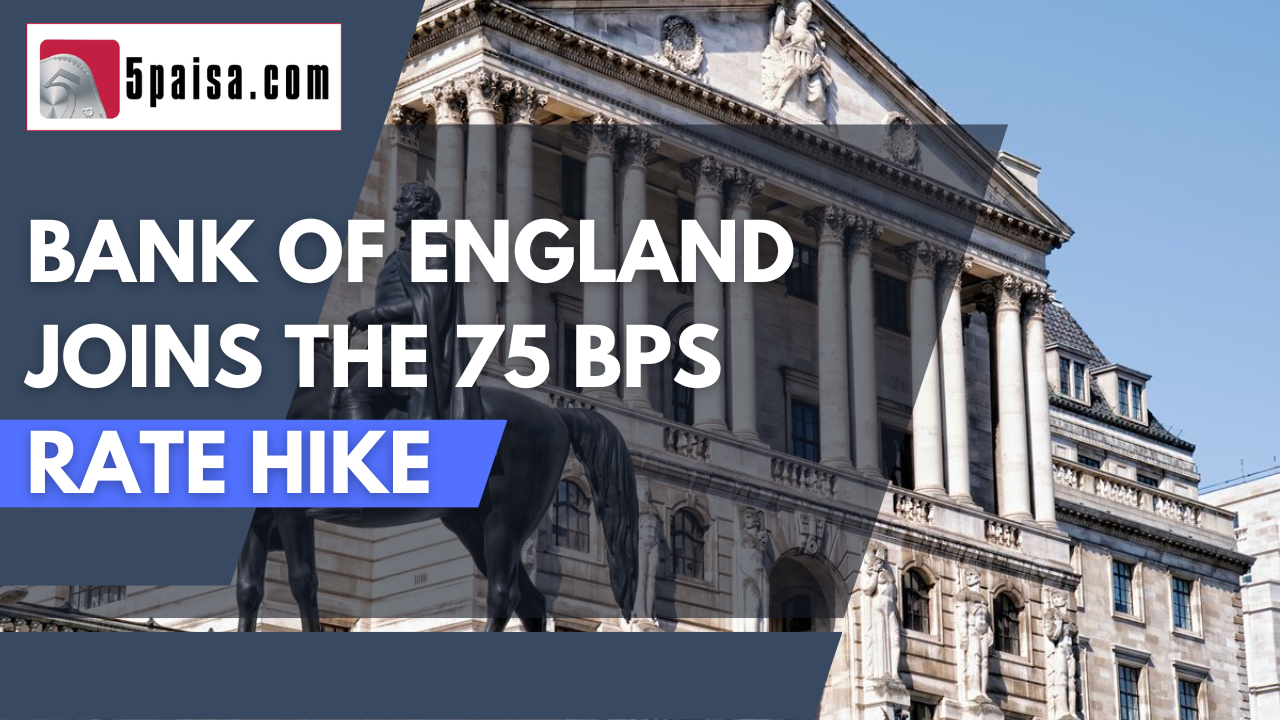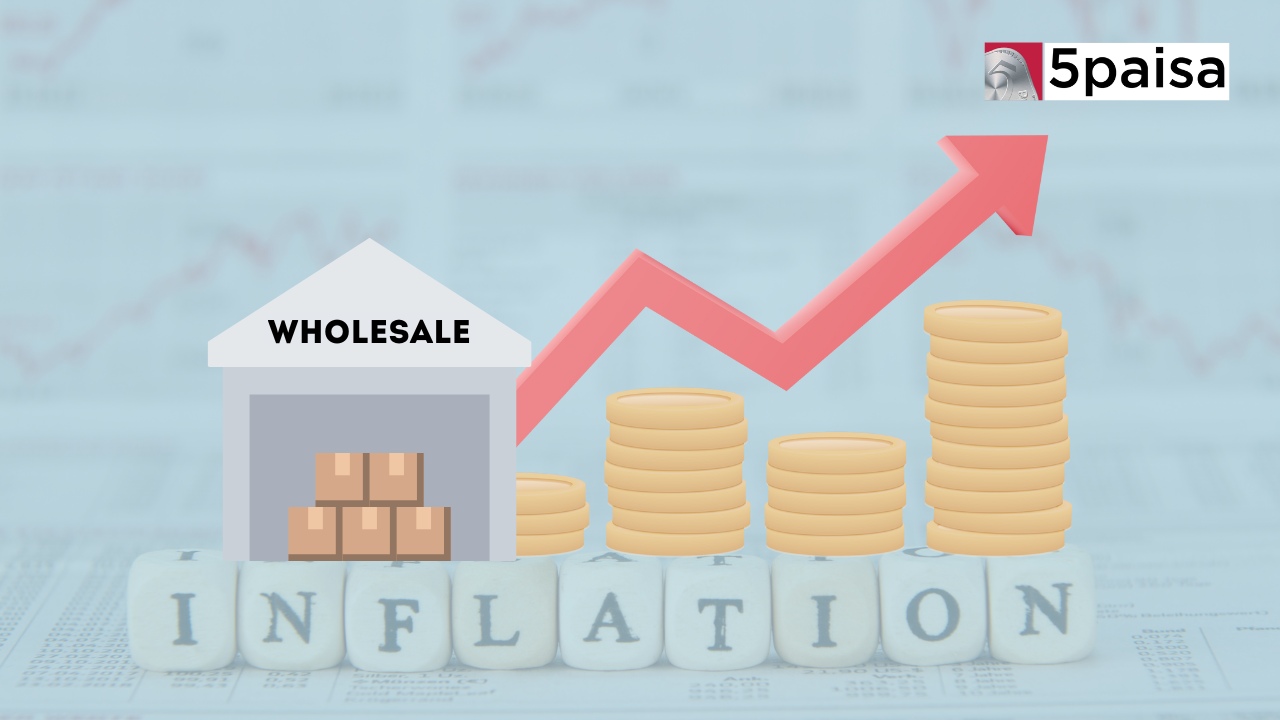Bank of England also joins the 75 bps rate hike bandwagon

It looks like the hawkishness season across central banks. Just a few days after the European Central Bank (ECB) hiked its benchmark rates by 75 bps, the US Fed hiked rates by 75 bps for the fourth time in a row Now, in the latest move, the Bank of England (better known as the Old Lady of Threadneedle Street), has also raised interest rates by 75 basis points from 2.25% to 3.00%. This is the sharpest spike in rates by the Bank of England since the year 1989. Ironically, this aggressive hawkishness comes at a time when the British economy is battling against an impending recession, even as inflation refuses to edge lower.
Ironically, the UK Pound fell sharply by 2% against the dollar after the decision was announced. Normally, a hike in interest rates is positive for the currencies as it is likely to attract capital flows. But these are uncertain times and the UK Pound does not have the same exorbitant privilege that the US dollar has. The higher rates are only make it more certain that the UK economy would not move towards a zero growth phase for at least the next two years. That is a lot worse than the growth impact seen in the aftermath of the global financial crisis in the year 2008, when the entire financial system was at the brink.
Unlike the Fed, which just one day earlier, had sounded extremely that hawkishness would kill inflation, the Bank of England sounded more ambivalent. That is reflected in the statement issued by the Bank of England and here is it how it reads. “We cannot make promises about future interest rates but based on where we stand today, Bank Rate will have to go up by less than currently priced in financial markets”. That was the message issued by the Governor of the Bank of England, Andrew Bailey.
Like in the US, Europe and most parts of the world, inflation is almost relentless in the UK too. For instance, the Bank of England expects that inflation will hit a 40-year high of 11% in the current quarter. However, the piquant situation arises from the fact that the Bank of England has also hinted at the British economy entering into a recessionary phase. In fact, the BOE has projected that the UK economy would see a total cumulative shrinkage of 2.9% over the next two calendar years viz. 2023 and 2024. That is a sort of situation you can classify as a stagflation scenario, where inflation is high, but the growth continues to falter.
Like in the US, even in the UK, the unemployment had touched a low of 3.5%. That is the lowest level of unemployment recorded by the UK economy in the last 52 years. However, with the hawkishness that the BOE has manifested of late, the rate of unemployment is expected to spike from 3.5% to 6% by the end of year 2025. There is one collateral problem that the UK economy is facing. This rampant hawkishness has led to a sharp spike in the borrowing costs and that is likely to introduce a new element of bankruptcy risk. In a sense, this hawkishness may be pushing the economy deeper into problems, just to beat inflation.
The decision to hike by 75 bps was not unanimous. In fact, two of the MPC members had voted to hike rates by either 25 bps or by 50 bps rather than the massive 75 bps. However, the majority view prevailed. This also raises questions over the terminal benchmark rates that the Bank of England will go up to. The markets are pricing in that the Bank of England could still go another 220 bps higher to 5.2%, although that may sound a little far-fetched at this point. However, if the US economy adds another 150 bps to its benchmark Fed rates, then UK and others may have to follow suit to avoid monetary divergence risks.
It is in this background that Rishi Sunak has taken charge as the prime minister of UK. He understands the economic challenges perfectly, being the former chancellor of the exchequer (the equivalent of a finance minister). It is how not clear if rate hikes would solve the problem. Inflation has been triggered by a combination of supply chain bottlenecks and residual labour shortages. If the situation gets too tight, it may kill growth without having an impact on inflation. The bet is that eventually insufficiency of global demand may kill inflation for good. But that appears to be a rather dangerous game to play.
If you go by the statements of the new British Finance Minister (Jeremy Hunt), the number one priority continues to be to grip inflation. It was the very economic chaos that had led to prime minister Truss resigning in just 44 days. It is not just the rate hikes, but Britain also has a $840 billion pile of bonds on its balance sheet, which it is trying to sell gradually. The combination of higher rates and tight liquidity is going to be a tough nut to crack.
- Flat ₹20 Brokerage
- Next-gen Trading
- Advance Charting
- Actionable Ideas
Trending on 5paisa
06
 Tanushree Jaiswal
Tanushree Jaiswal
Indian Market Related Articles
Disclaimer: Investment in securities market are subject to market risks, read all the related documents carefully before investing. For detailed disclaimer please Click here.
 5paisa Research Team
5paisa Research Team




